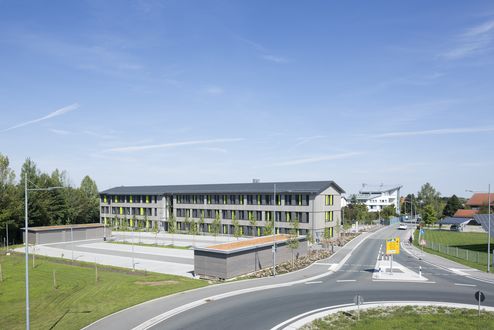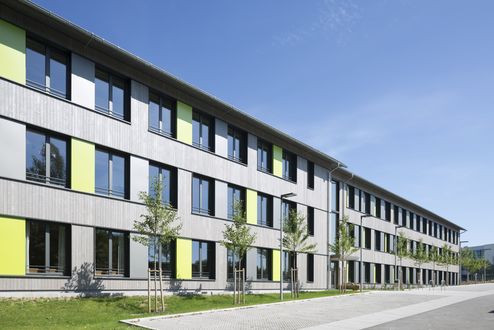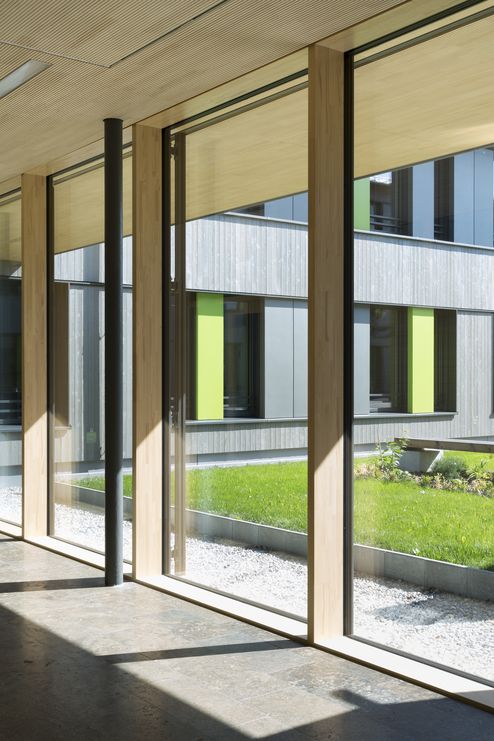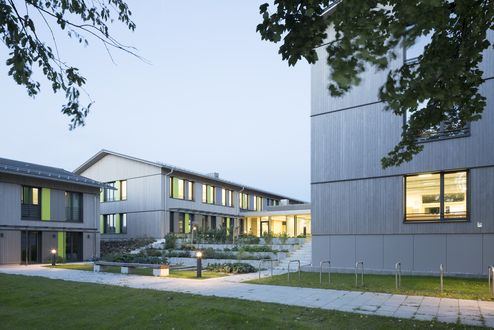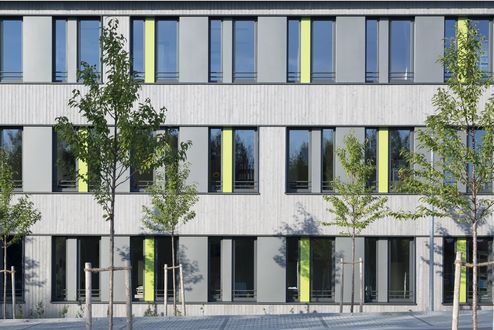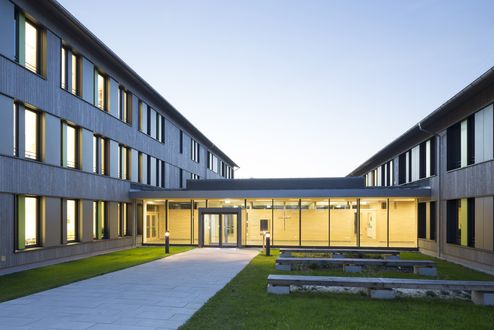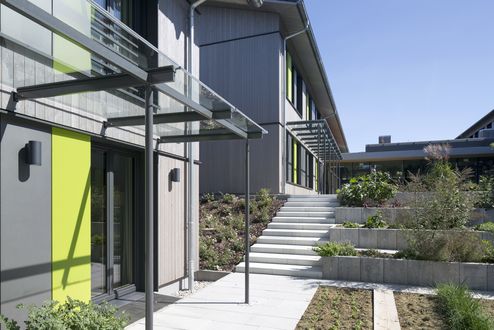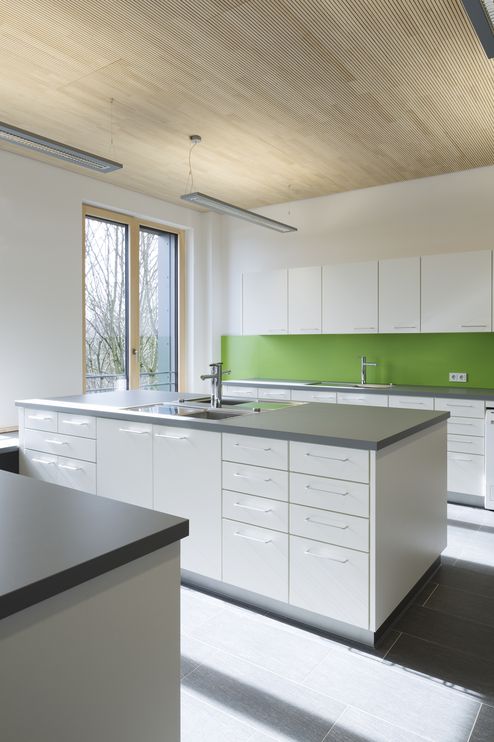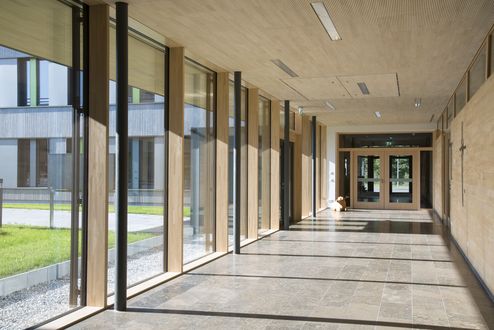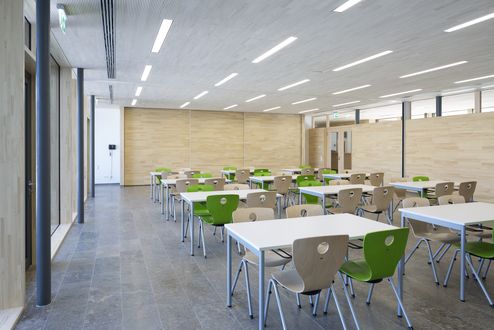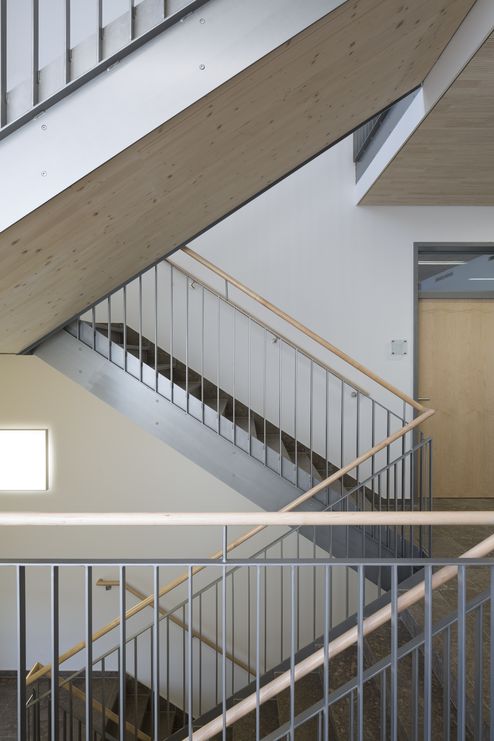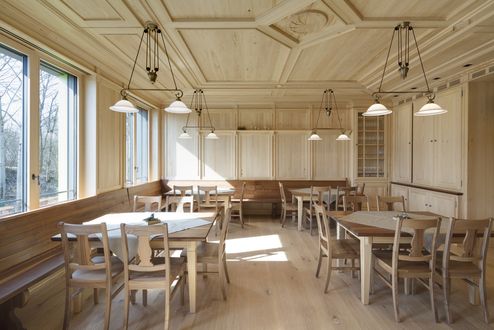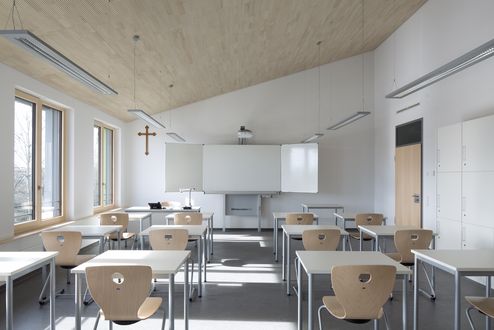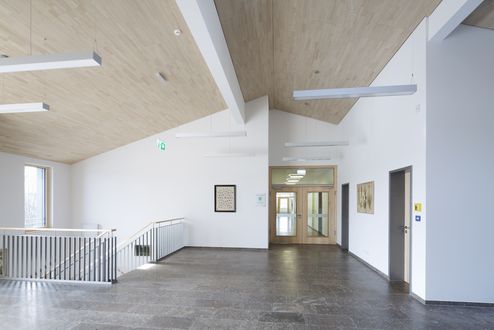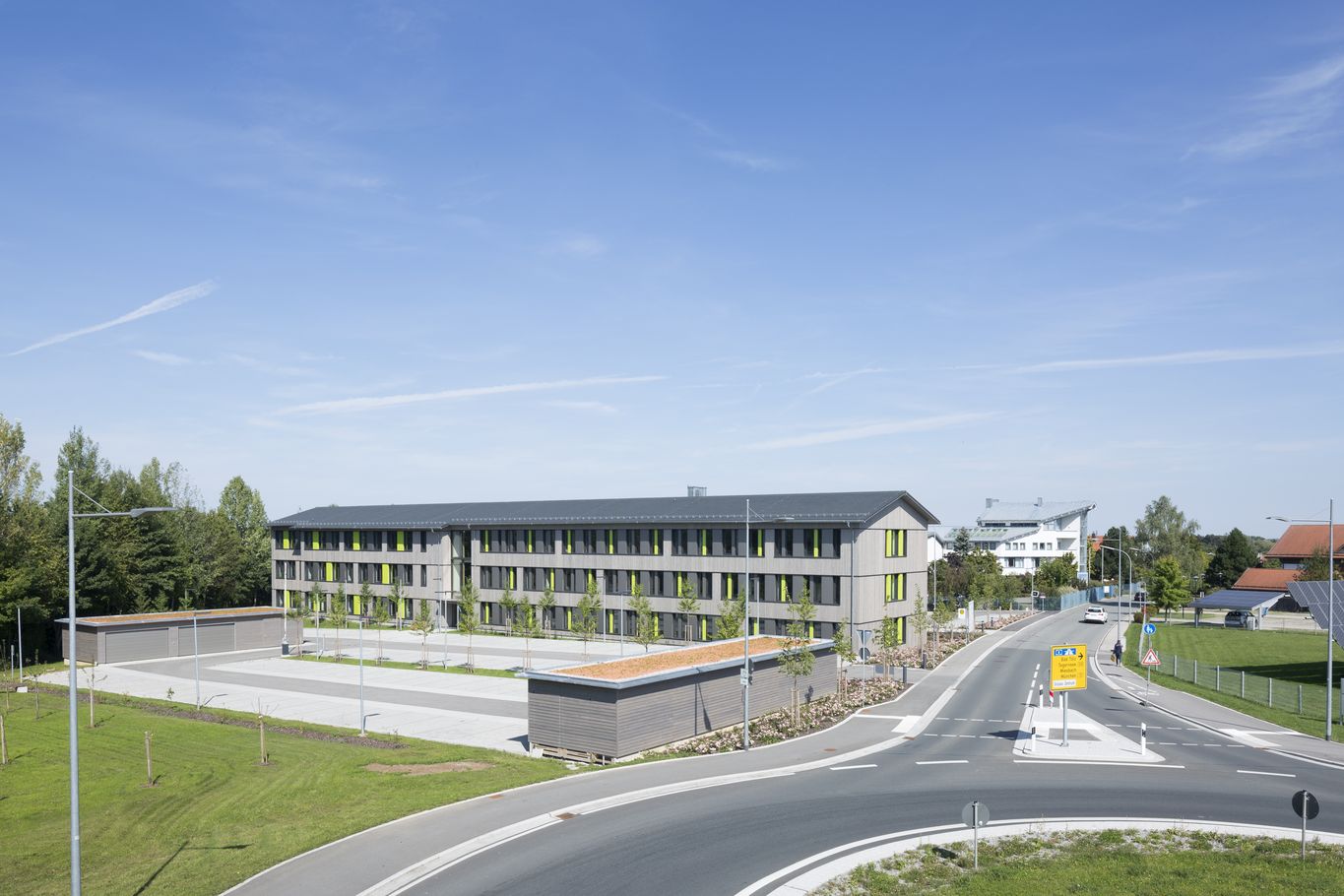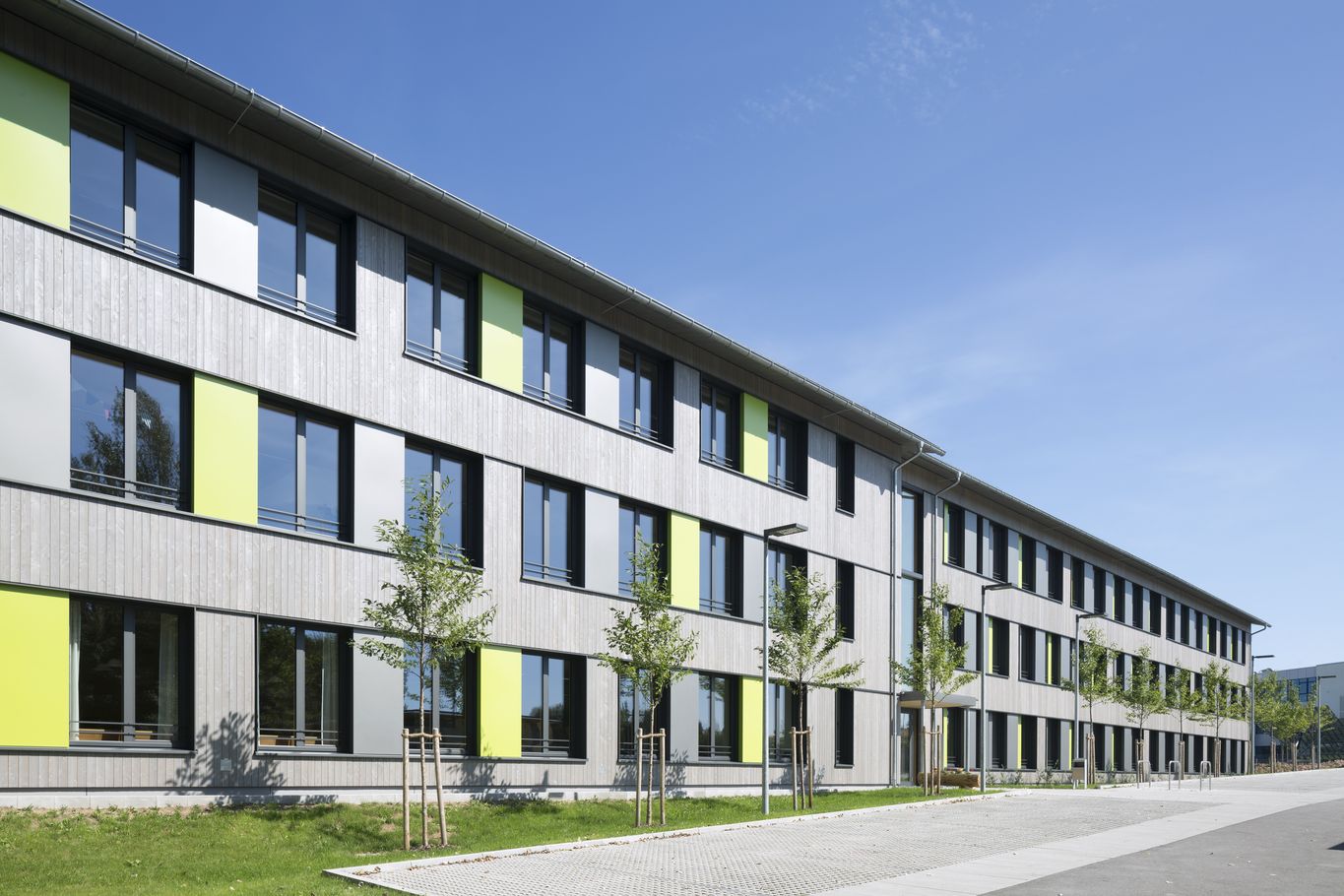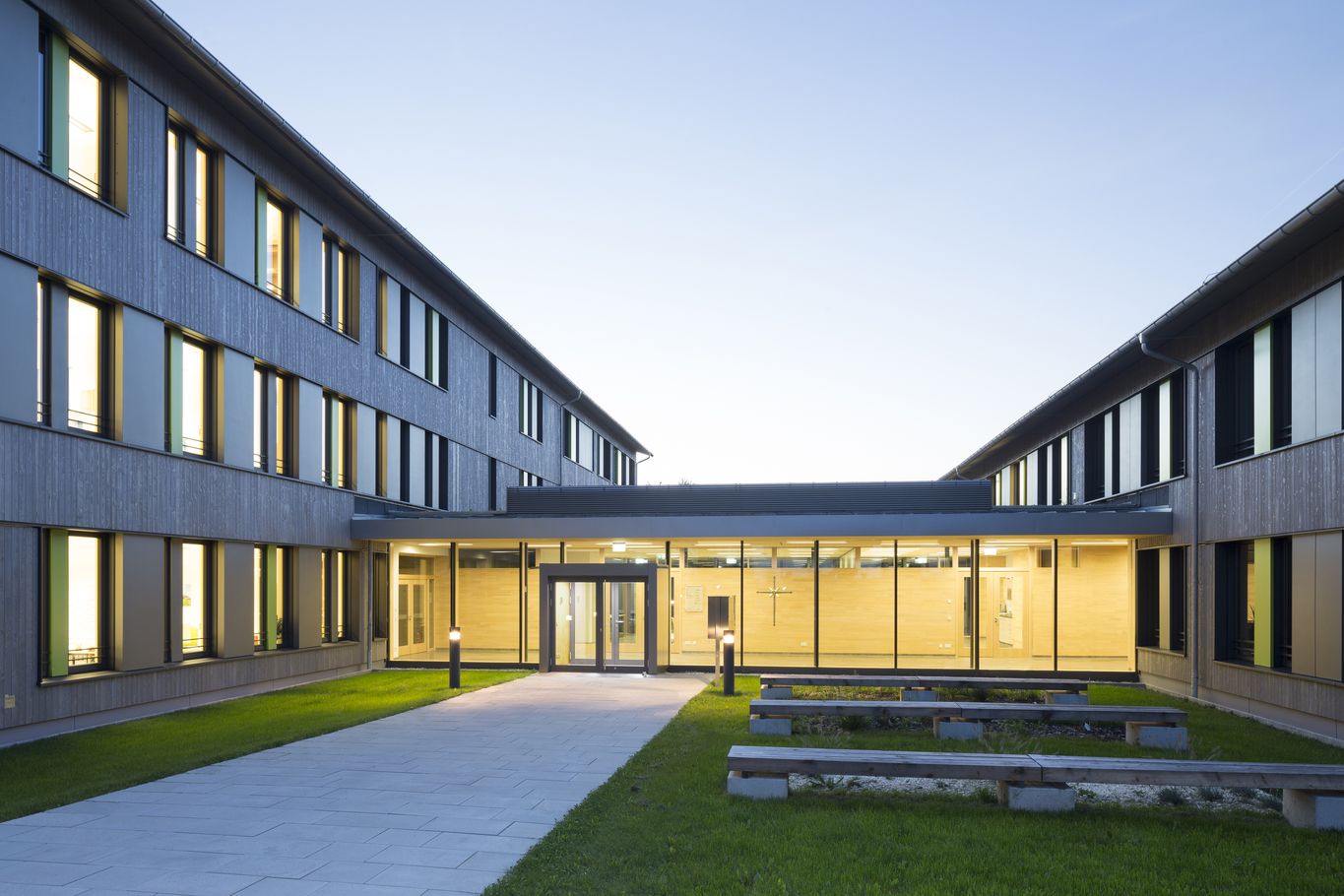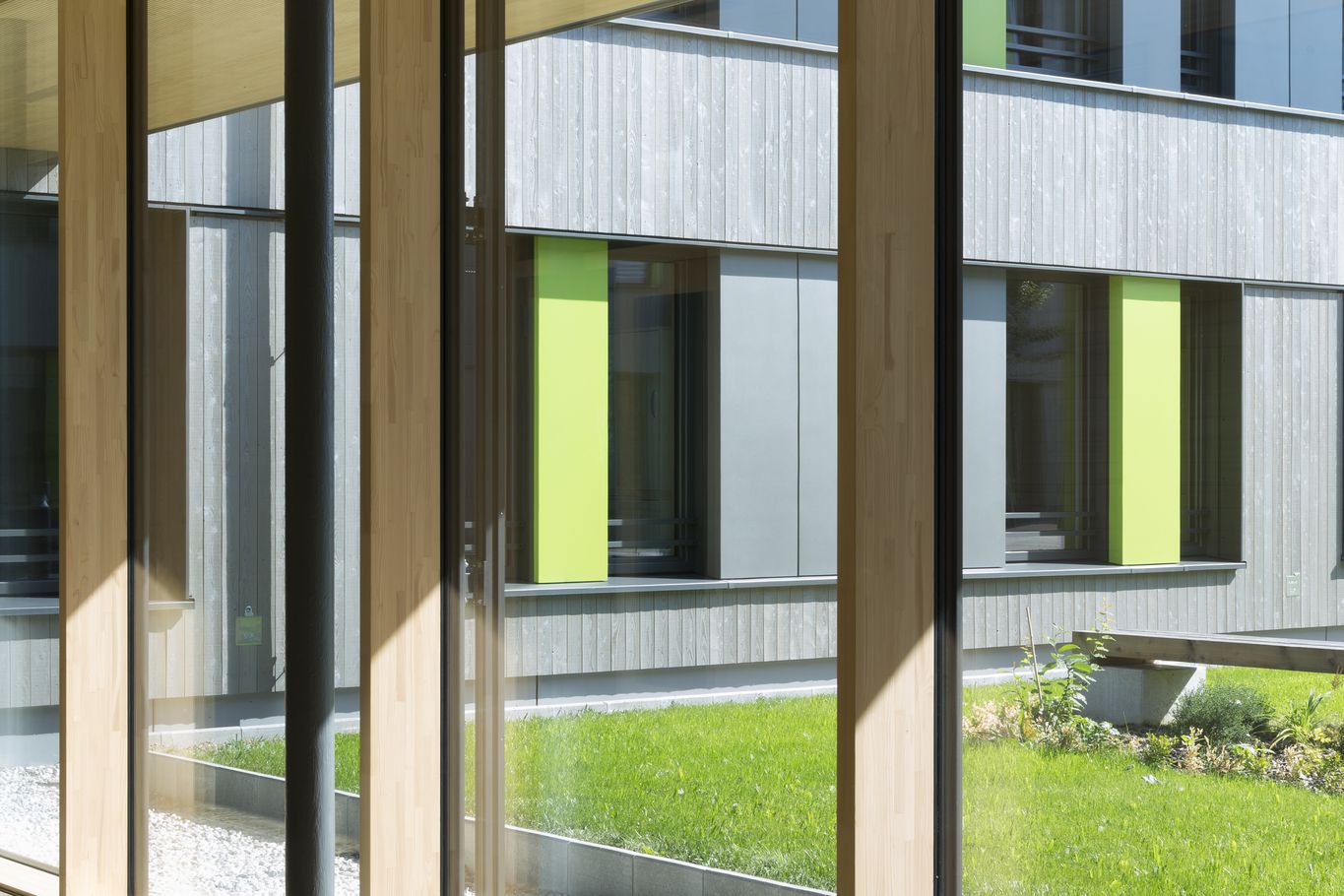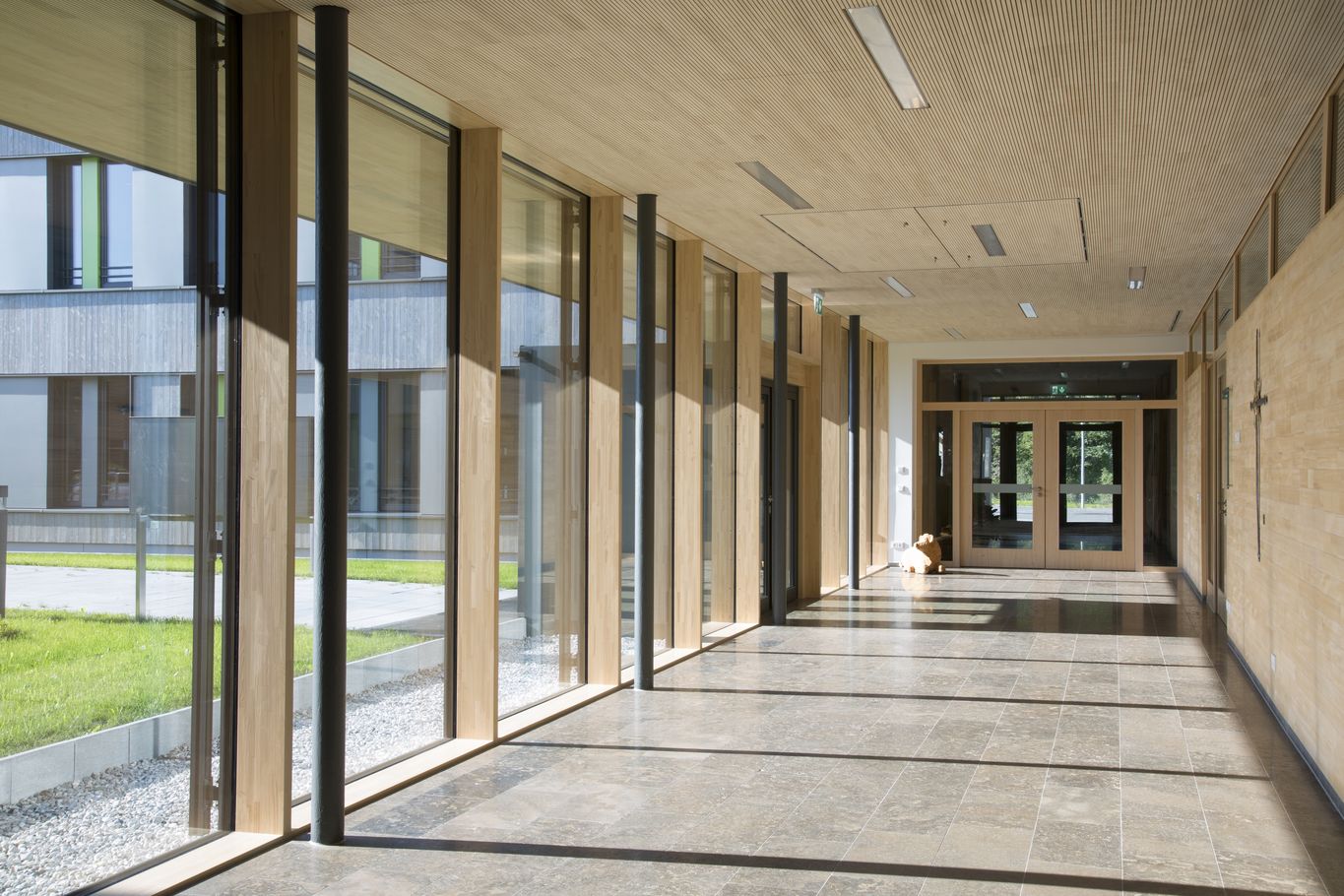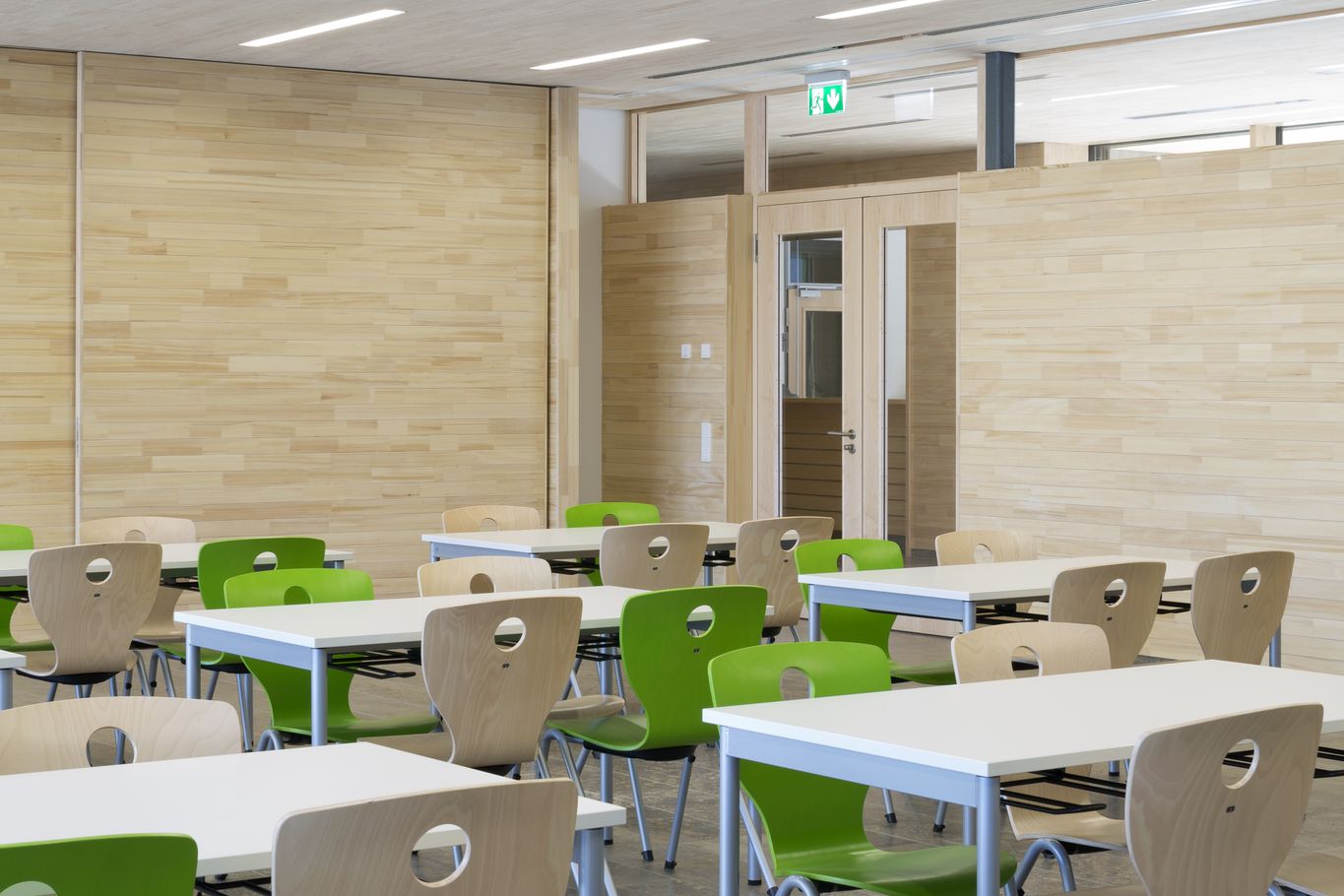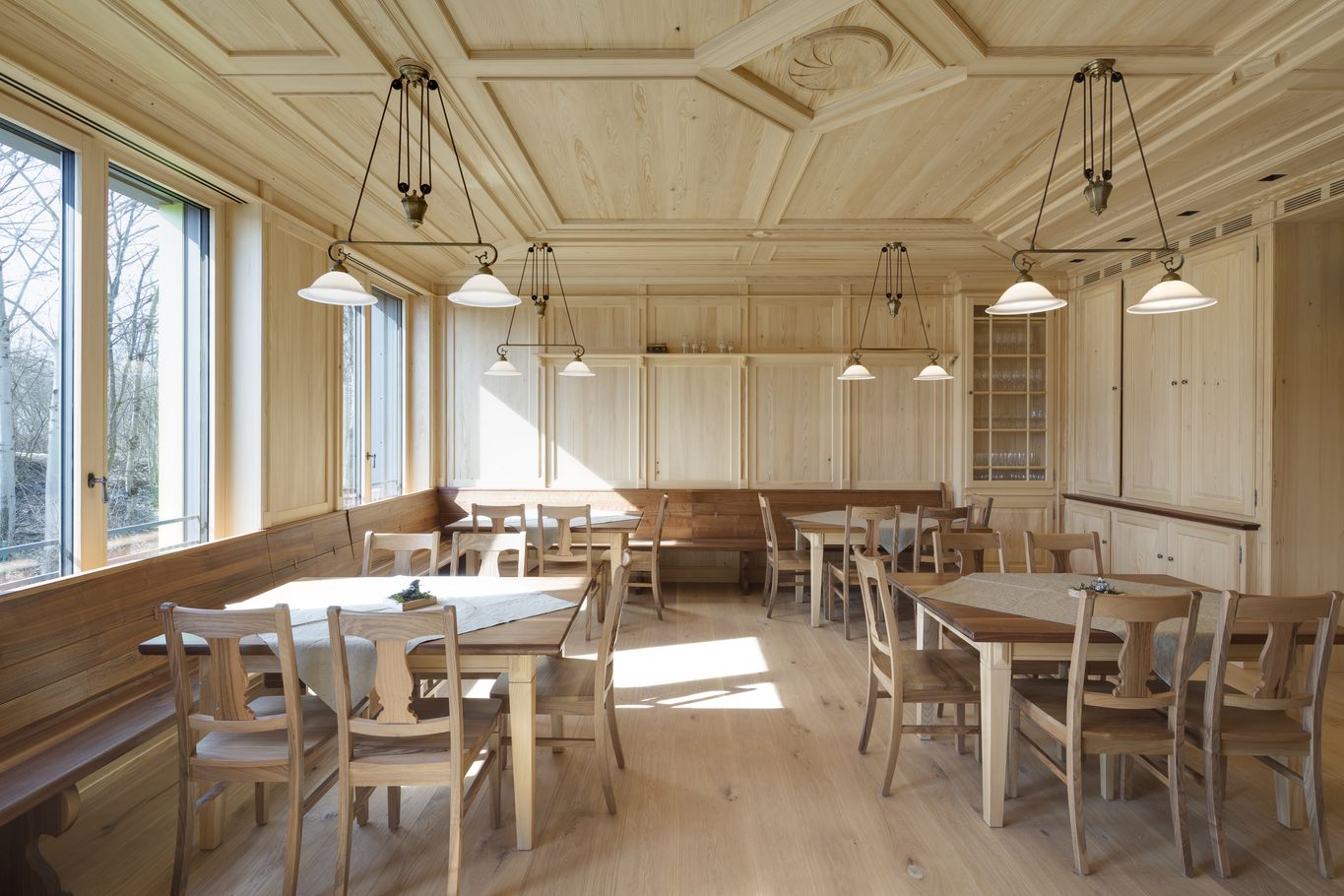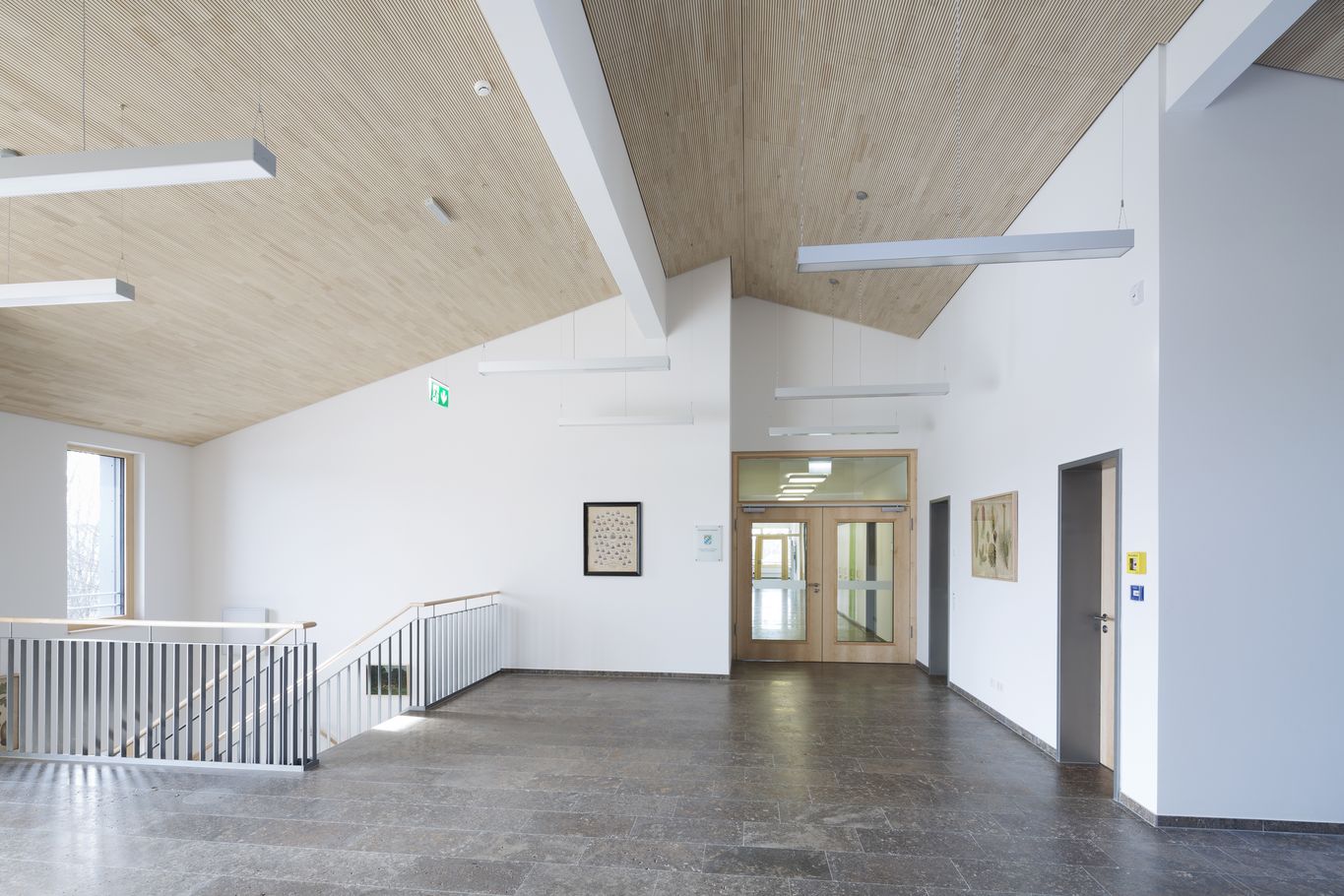Grünes Zentrum, Holzkirchen | Germany
The new building for the Office for Nutrition, Agriculture and Forestry was built with a view to extended use. This building complex includes an agricultural college with a cafeteria, a residential school and an administrative building for advisory services. It was designed as a certified passive house with a timber construction. Entering through an entrance courtyard, visitors come to a central foyer to which all the separate areas are directly connected. The cafeteria and recreational rooms are housed in the central building with direct access to the garden courtyard. The residential school is separate from the main complex.
facts
Project Office for Nutrition, Agriculture and Forestry
Place Holzkirchen, Germany
Year of construction 2015
Contracting authority Free State of Bavaria
Client Bayerischer Bauernverband BBV
Architecture Project planners Gerhard Simson and Wilfried Dederer
Execution müllerblaustein GmbH
Concept
The „Grünes Zentrum” in Holzkirchen is located on a green belt within the community, which separates a residential area from a business park. A meadow with scattered fruit trees was planted on the southern piece of land to even out the levels and for recreational purposes. The two wings of the building form a public entrance courtyard and a garden courtyard. The differences in level were evened out by a terraced college garden.
The buildings have a usable floor area of 5,000 m² with a heating requirement of less than 15 kWh/m²a and a total primary energy requirement of only 102 kWh/m²a. The construction costs were € 10 million.
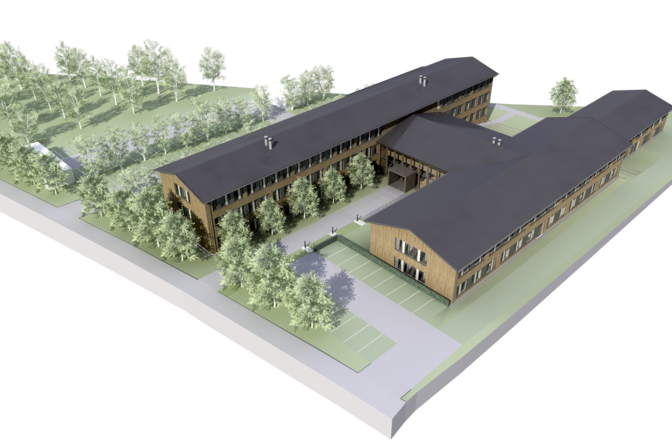
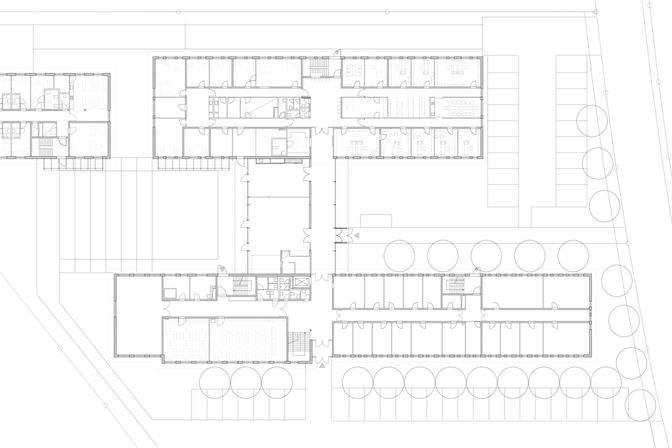
Construction
The building was constructed as a modular prefabricated timber construction on a reinforced steel slab on foam glass gravel. The exterior shell has a timber post construction with blow-in insulation and back-ventilated timber façade. All load-bearing elements, such as interior walls, including ceilings, staircases, lift shafts and firewalls, were produced with binderholz CLT BBS elements. The roof construction was executed with rafters and a clay tile cover.
Structural physics | Building biology
There are no thermal bridges in the entire construction, which is permeable. All rooms have large-scale visible wooden surfaces and drywall plaster walls. This has a positive effect on the indoor climate and enables the interior humidity to be naturally regulated. The thick, relatively heavyweight timber insulation regulates the ingress of heat in summer. Outstanding acoustic insulation is provided together with the triple glazing.
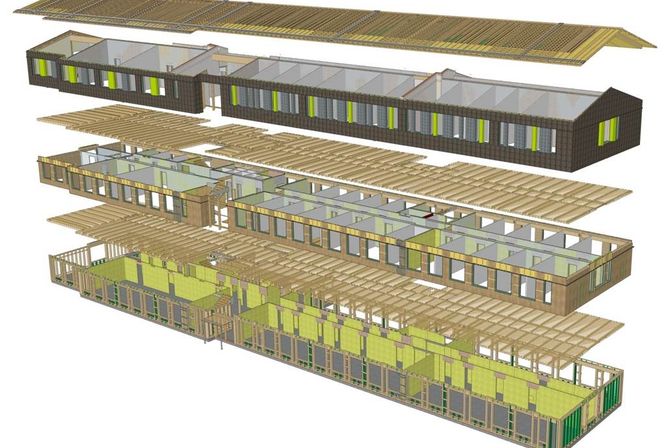
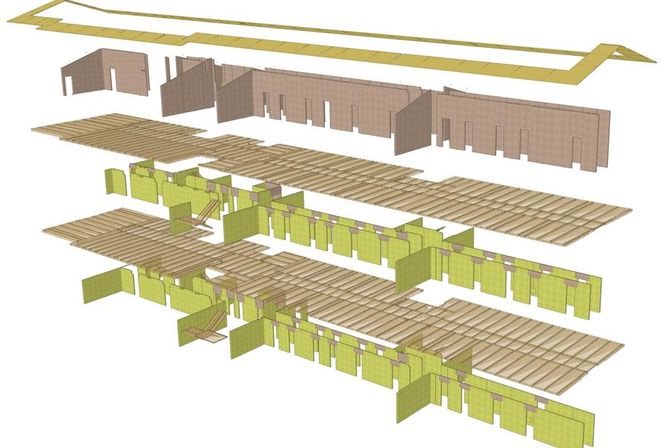
Environmental concept
Natural materials, like wood, natural stone, brick and plaster, were used with the minimum processing possible. The use of petrochemical products was reduced to what was absolutely necessary. The construction method using timber elements means that the construction materials are simple to separate and are highly recyclable. The building also used some materials containing a percentage of recycled material. The passive house makes use of the available internal heat gains (heat radiated by people and equipment) and uses the external solar energy highly efficiently in the simplest manner through the high-grade 'passive house standard' windows. Heat storage and heat insulation are coordinated to each other and optimised. Even surface temperatures are achieved using high-grade insulation and natural materials. A ventilation system with highly-efficient heat recovery minimises heat losses throughout ventilation, both contributing to a constant and pleasant indoor climate. All these measures help to minimise the residual heat requirement, and there is thus very low consumption of renewable materials and energy sources.
Use of geothermal systems | Photovoltaics
The residual heat requirement is provided by heat pumps with geothermal probes and underfloor heating. The system can be used in summer for extremely energy-efficient passive cooling. A photovoltaic system was designed but has not yet been installed.
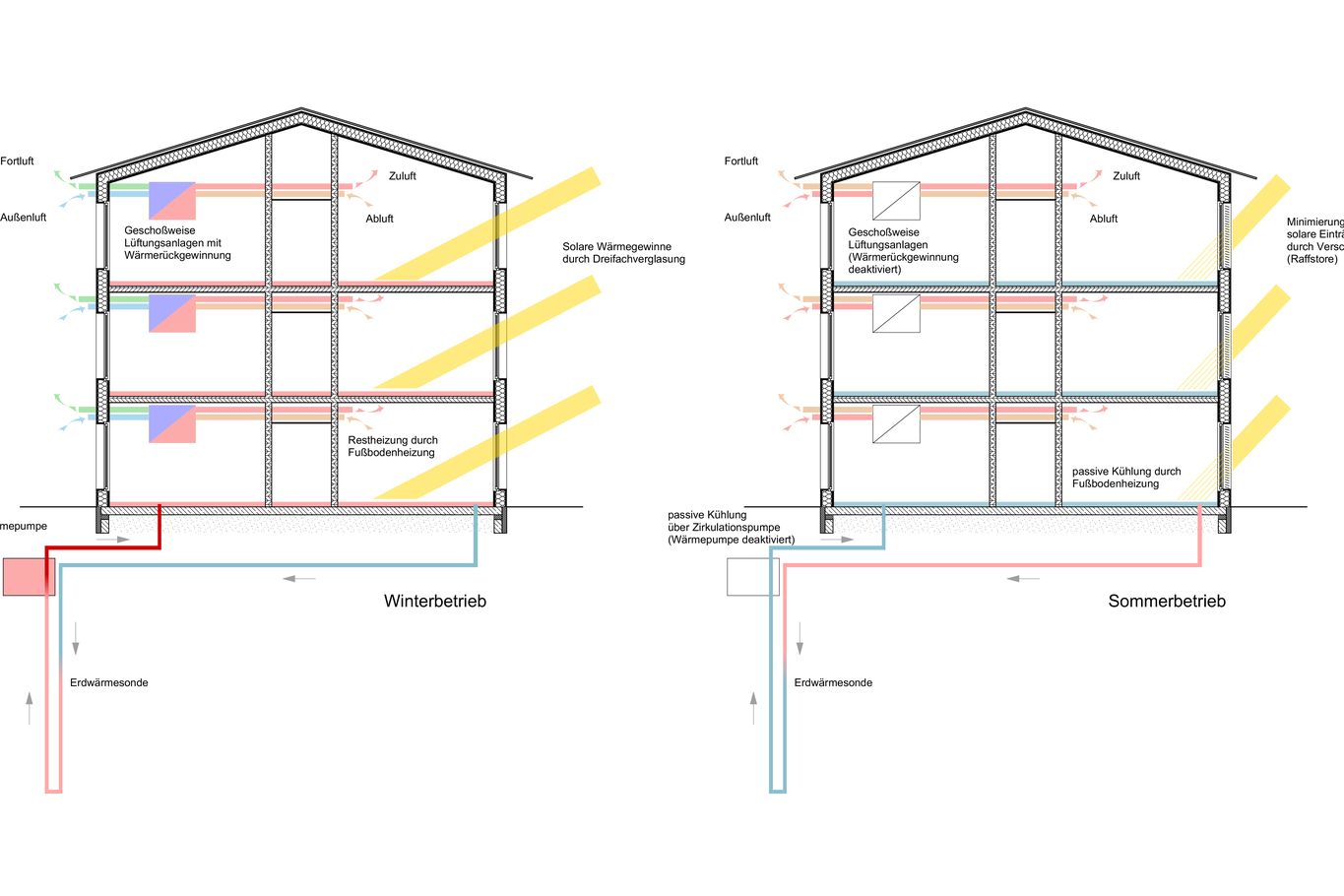
Lamp and lighting concept
All the rooms are naturally lit and have external slatted blinds to provide sun shading and to control the lighting. The lamps provide both direct and indirect lighting. The reflection of the light on the timber ceilings creates a pleasant and natural lighting ambience. The construction materials essentially exude their natural colour and finish. The exterior façade was constructed using pre-greyed larch wood profiles.
Photos: © Müller-Naumann, Müllerblaustein
